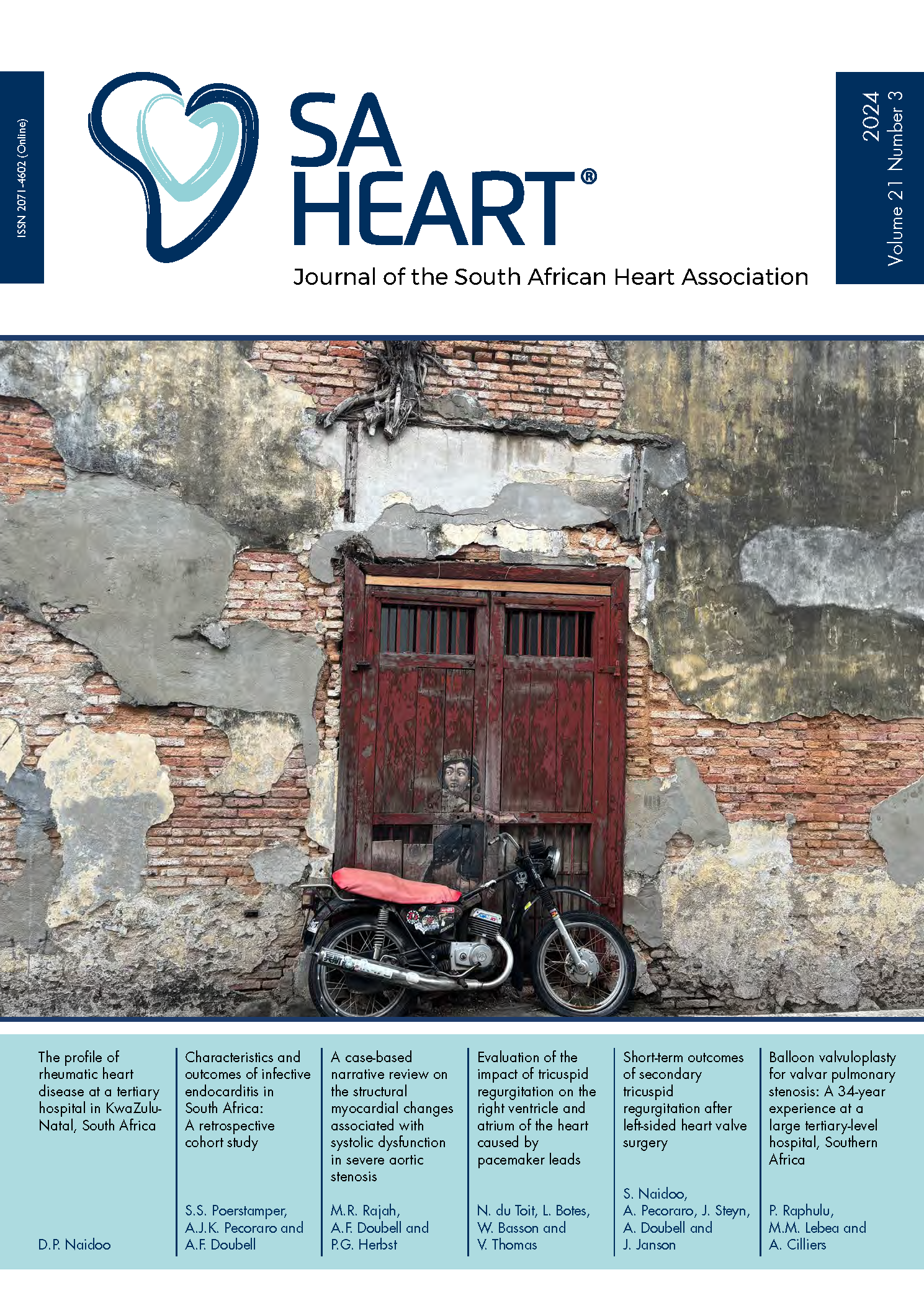Evaluation of the impact of tricuspid regurgitation on the right ventricle and atrium of the heart caused by pacemaker leads
DOI:
https://doi.org/10.24170/21-3-5235Abstract
Introduction: The number of permanent device implantations to treat conduction disorders has dramatically increased over the past decade. The aim of the study was to investigate the development of lead-induced tricuspid regurgitation (TR) after permanent endocardial lead implantation. Methods: This prospective analytical observational study included 30 adult patients (≥18 years) that qualified for a cardiac pacemaker. Before implantation, demographic and anthropometric data were recorded. A 2D echocardiogram was performed to evaluate TR prior to implantation and at 6-week and 9 - 16-month followups. TAPSE and tissue doppler imaging (RV S’) were used to evaluate right ventricular function and basal and mid-right ventricular (RV) diameter and right atrial (RA) area.
Results: The TR grade significantly worsened in 46% of patients from baseline to the 9 - 16-month postimplantation. However, the TR was not clinically significant. RV function, RV dimension and RA area remained within normal reference ranges. There was a negligible correlation between TR at baseline vs. the 9 - 16-month follow-up for TAPSE, RA area, basal and mid-RV diameter.
Conclusion: After long-term follow-up, TR grade worsened after lead implantation, but not to clinically significant
(moderate or severe) levels.
Downloads
Downloads
Published
How to Cite
Issue
Section
License
This journal is an open access journal, and the authors and journal should be properly acknowledged, when works are cited.
Authors may use the publishers version for teaching purposes, in books, theses, dissertations, conferences and conference papers.
A copy of the authors’ publishers version may also be hosted on the following websites:
- Non-commercial personal homepage or blog.
- Institutional webpage.
- Authors Institutional Repository.
The following notice should accompany such a posting on the website: “This is an electronic version of an article published in SAHJ, Volume XXX, number XXX, pages XXX–XXX”, DOI. Authors should also supply a hyperlink to the original paper or indicate where the original paper (http://www.journals.ac.za/index.php/SAHJ) may be found.
Authors publishers version, affiliated with the Stellenbosch University will be automatically deposited in the University’s’ Institutional Repository SUNScholar.
Articles as a whole, may not be re-published with another journal.
Copyright Holder: SA Heart Journal
The following license applies:
Attribution CC BY-NC-ND 4.0

